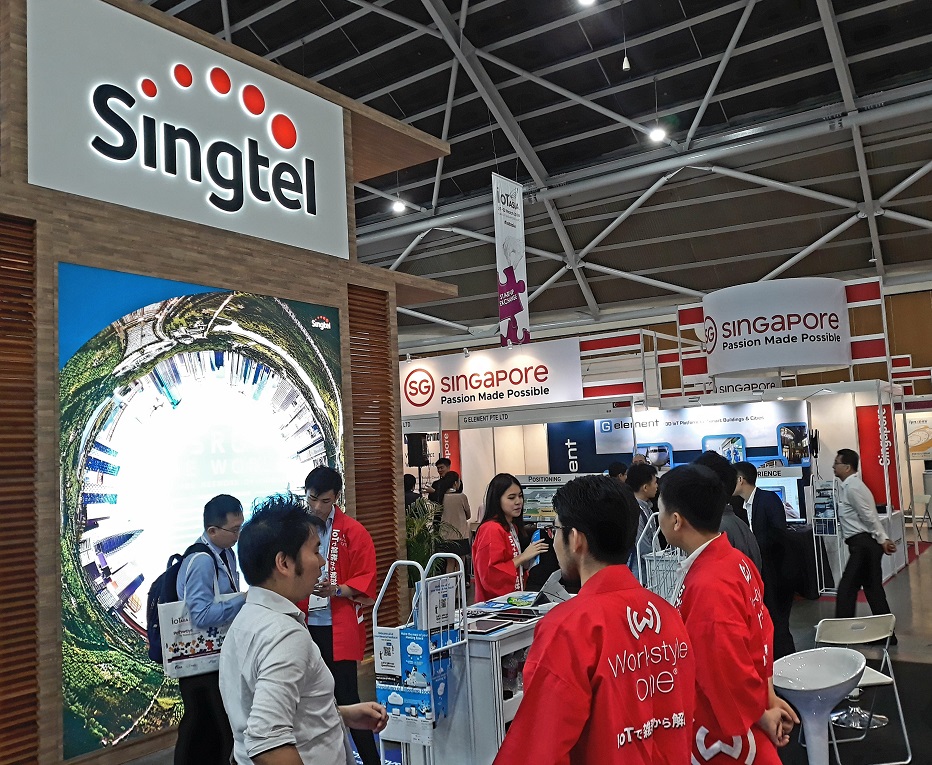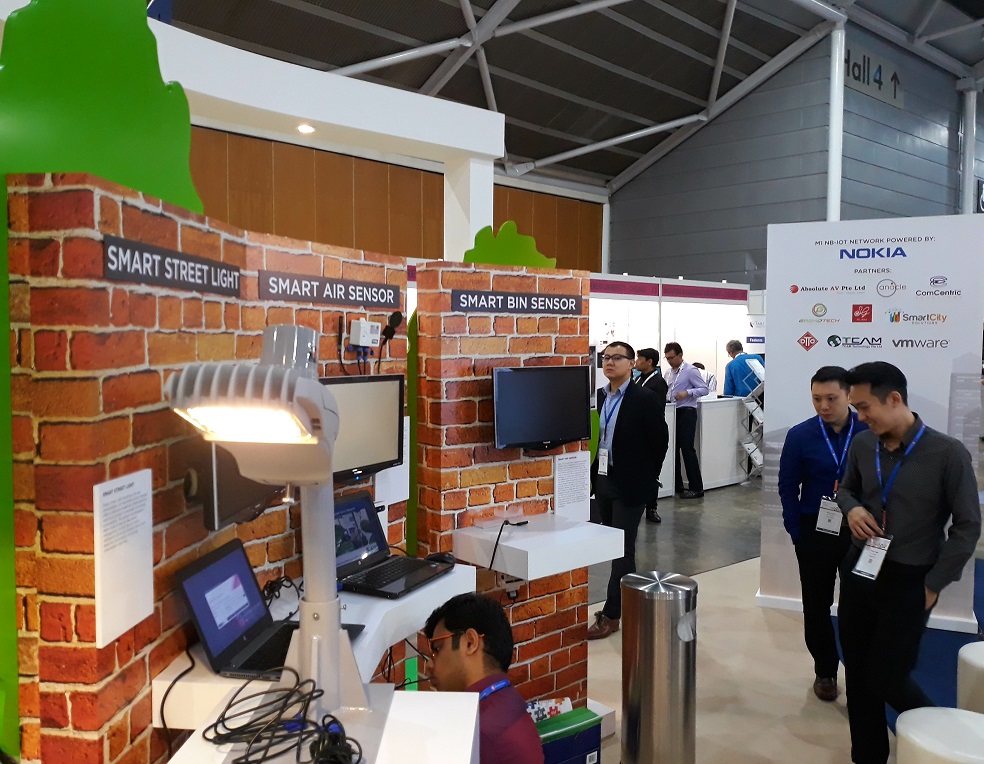

The recent IoT Asia conference and exhibition in Singapore (March 21-22) saw a first-time appearance at what is the region’s longest running IoT event (five years) by two of the country’s telecommunications operators, M1 and Singtel. Both companies have ridden the cellular telephony wave in the tech savvy city-state where the mobile penetration rate is at around 150 percent (yes, more phones than people) and are now keenly aware of the businesses opportunities from connecting things as well as people.
Existing cellular networks are primarily designed to handle voice calls and consumer internet data traffic rather than the lower bandwidth applications generally associated with the Internet of Things, and thus efforts have been underway for a couple of years now to develop what are called Low Power Wide Area Networks (LPWANs), which tick boxes marked low cost, long battery life (several years versus your iPhone’s single day) and extended range coverage – all important for IoT applications where the device count can run into many thousands and span across large geographic areas. In the cellular (i.e. licensed spectrum) world, the main LPWAN technologies are NB-IoT and the higher bandwidth LTE CAT-M1. (Another set of LPWAN technologies, e.g. LoRa, Sigfox, exists in the non-cellular world.)
Just three weeks before IoT Asia and following trials with partners including shared bicycle and smart metering companies, Singtel announced commercial availability of its nationwide cellular LPWA network, which supports both NB-IoT and CAT-M1 devices. The telecom provider, which has been conducting trials with companies at an IoT innovation lab set up last year with its IoT technology partner Ericsson, is collaborating with smart metering solutions provider EDMI Limited to develop Cat-M1 based smart electric metering infrastructure in Singapore.

Singtel’s launch follows M1’s announcement last August of “Southeast Asia’s first commercial nationwide NB-IoT network”, which is being used in an intelligent waste management smart city project in Singapore. Connected level sensors on trash bins sending out real-time alerts at designated fill levels means full bins cleared more promptly and less time and resources spent on attending to empty bins. The result: improved environmental hygiene and increased operational efficiency.

The burgeoning interest and activity around cellular IoT networks was also in evidence at this year’s Mobile World Congress in Barcelona (Feb 28 – Mar 1). According to GSMA, the mobile industry body and organizer of the event, 23 mobile operators have commercially launched a total of 41 mobile IoT networks featuring both NB-IoT and LTE-M technologies. This growth is supported by 34 IoT Labs, which are available to operators, module vendors and application providers to facilitate the development of LPWAN devices and applications for different verticals. GSMA forecasts 1.8 billion licensed LPWAN IoT connections by 2025.
Announcements throughout MWC 2018, by both telcom operators and technology providers, indicate continued ramp-up of the IoT momentum apparent at last year’s MWC. For instance, Deutsche Telekom, one of the most active carriers in the IoT arena, said its NB-IoT network is now ready for use in virtually all business areas, including industrial automation, transport & logistics, and the public sector. In one food & beverage application, NB-IoT sensors monitor (temperature, humidity, luminosity) and track individual bottles of wine all the way from winery through transport to liquor store, with the integrity checkable by reading a QR code on the bottle. For the infrastructure sector, an NB-IoT digital monitoring solution (temperature, humidity, corrosion) for bridges, tunnels and buildings provides useful early warning of structural problems.
Technology provider Cisco used this year’s MWC to announce the launch of Cisco Jasper Control Center for NB-IoT, which it touts as the first commercially available global NB-IoT platform. Control Center for NB-IoT combines automation capabilities with real-time visibility and insights across large numbers of connected devices so that customers can more easily manage large deployments. Companies can also manage connectivity based on the business value from each connected device by selecting only the platform features they really need for their applications.
Cisco tied up with Chinese telcom service provider China Unicom for trials of this new NB-IoT platform, with adoption across areas including smart metering, parking, fire control and street lighting. Articulating the positive future for cellular IoT networks, Xiaotian Chen, general manager of China Unicom IoT Business Unit, says that the “extremely high” demand for low cost, low power connectivity throughout China will result in a projected 100 million NB-IoT connections on the China Unicom network by 2020.

